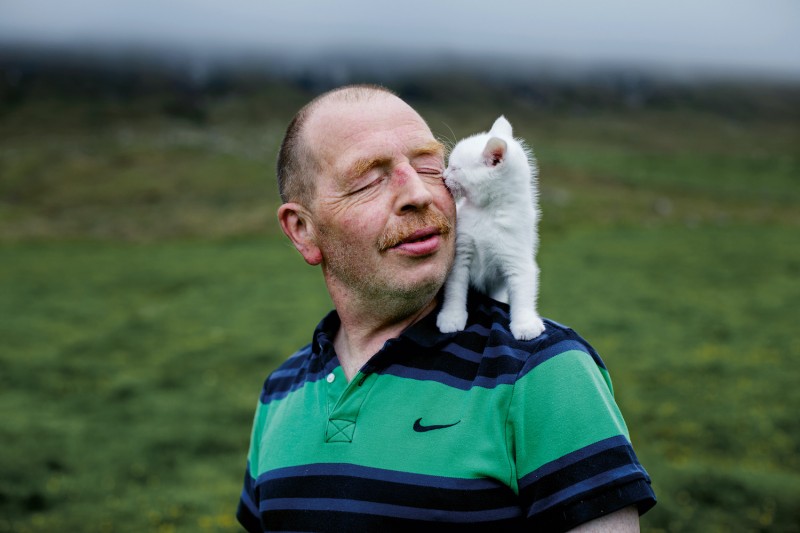Book of the Month: Atlantic Cowboy
Book of the Month: Atlantic Cowboy
March 20, 2023

Hjalmar, his shirt stained with blood during sheep slaughtering on a farm in Kaldbaksbotnur
A territory belonging to the Danish crown, the Faroe Islands lie 320 kilometres north-northwest of Scotland, and about halfway between Norway and Iceland. Even though traditional jobs like fishing have been modernised, it is still a branch of industry driven by men. According to the conventional image here, it is the man who was and is the hunter – the provider who secures the survival of the family. He is a fisherman, whaler, bird catcher, shepherd, boat builder, and sometime storyteller. However, while the men continue to take to the sea, island society has changed: many young women now move abroad to work, to train in a profession, or to study. More than half of those who leave never come back. This means that, within the population of 54,000, the scarcity of women continues to grow.
Andrea Gjestvang travelled to the group of islands a number of times, between 2014 and 2019, while working on a long-term project that explores the consequences of social change. The resulting photo book has just been published. It presents an accomplished mixture of portraits, still lifes and landscapes; as well as a clever contemplation about tradition, changing roles, identity and isolation, that extends well beyond the islands. After all, role definitions and relationships continue to change in other traditional social structures. The men on the Faroe Islands are but one example – albeit in a magnificent landscape.
Andrea Gjestvang: Atlantic Cowboy+-

With an essay by Firouz Gaini
144 pages, 82 colour pictures
30 x 22 cm, English.
Gost

Hjalmar, his shirt stained with blood during sheep slaughtering on a farm in Kaldbaksbotnur

Aadne and Jóannes (52) together in their childhood home in Klaksvík

View of the small town of Viðareiði

Fróði rests on a slaughtered whale, during a grindadráp in Hvannasund, Faroe Islands. Grindadráp, the pilot whale hunt, is a tradition and part of the Faroese cultural identity

Andrias (54) with his little white pet kitten, outside his home in Vidareidi, which he shares with his mother

Klaksvík in April. It is the second-largest town in the Faroes

During the Joansoeka midsummer festival, people gather at a temporary amusement park at the harbour in Vágur in the south of the Faroe Islands

Rogni (26) and Odin (25) in a hot tub at around midnight, in Mykines, the westernmost island in the Faroes

A young boy looks out of a window, while travelling on the ferry that takes passengers between the capital, Tórshavn, and the southernmost island of Suduroy

Interior of a carpentry workshop in the capital of Tórshavn